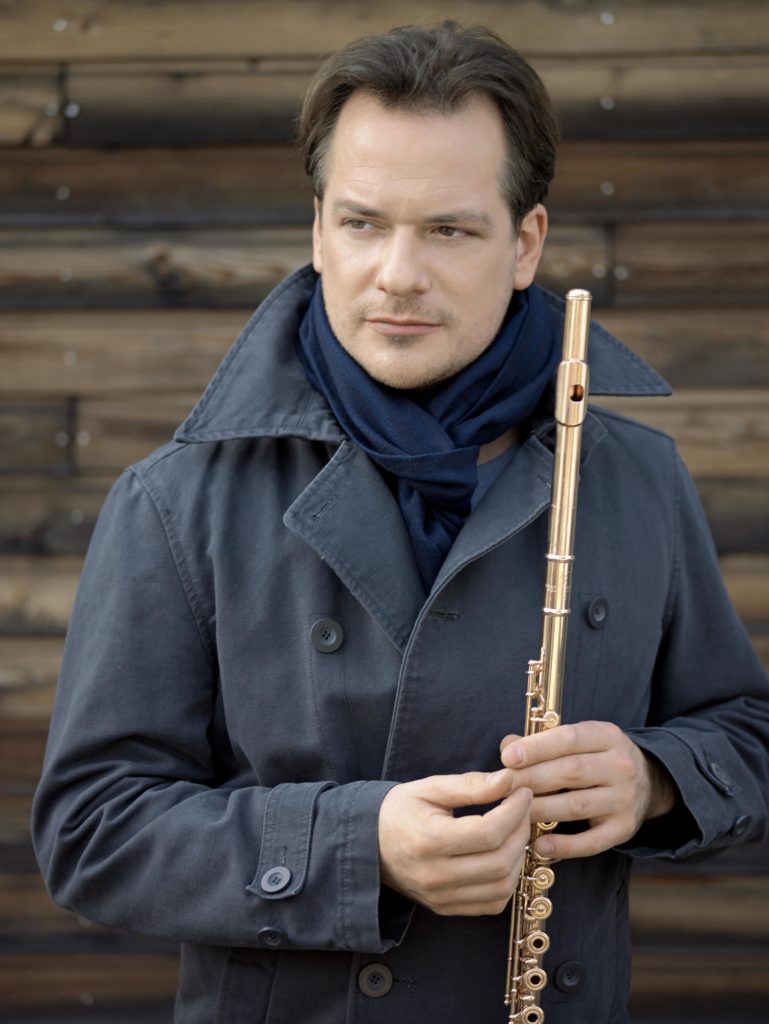Fischer returns with varied lineup, from Haydn to Janáček
Thierry Fischer returned to the helm of the Utah Symphony Friday night for the first time this year to conduct a concert that bore the distinct hallmarks of his 13 seasons as music director.
The program featured a Haydn symphony, which has become a staple of Fischer’s tenure. And like so many of Fischer’s programs, Friday’s concert juxtaposed several contrasting pieces in a pointed way, following the Haydn with music of Alban Berg.
The concert began with a refined yet playful rendition of Haydn’s Symphony No. 12 in E Major, which the orchestra performed standing up. The piece used only a small string section, a single oboe and bassoon, and two French horns, The smaller forces allowed Fischer to sculpt each phrase and employ precise, subtle articulation. The Adagio movement, which slips into E minor, was exquisite and soulful while the lively finale brimmed with rhythmic drive and wit.
Berg’s Lyric Suite is a 20th century piece of similar length and orchestration to the Haydn. This invited comparisons between the First Viennese School of Haydn, Mozart and Beethoven and the Second Viennese School of Schoenberg, Berg, and Webern.
Fischer and the orchestra gave the Berg a rapturous, Romantic sensibility. In the first movement, the dissonance inherent in Berg’s serialist method was overshadowed by the orchestra’s phrasing, which brought out the piece’s lush harmonies. The second movement was marked by muted motifs, which ricocheted eerily throughout the orchestra. Under Fischer’s baton, it had a playful, scampering quality. The darker, more fatalistic third movement showcased the composer’s sense of counterpoint, with two-note phrases underpinning rapturous runs. The movement also showcased the orchestra’s cohesion, precision, and sense of balance, as the melody was never lost in the piece’s somewhat abstract busy-ness.
The concert’s centerpiece was Robert Fobbes’ delightful arrangement of themes from Mozart’s opera The Magic Flute into a concertante Fantasy for flute and orchestra. Emmanuel Pahud, co-principal flute of the Berlin Philharmonic and a longtime Utah guest, played both the Fantasy and Carl Nielsen’s Flute Concerto.
Pahud’s technique, musicality, and charisma were on full display from his first entrance in the Mozart/Fobbes Fantasy.
He played from memory, swaying and at times, nearly dancing as he played. His tone in the low register was deep and rich, and it remained clear throughout the fireworks in the high register.
The form of the Fantasy is like a jazz chart: each well-known Magic Flute melody was played straight and then repeated with virtuosic flourishes and embellishments. Pahud took the first melody, from Pamina and Papageno’s duet, more slowly than it usually appears in the opera and gave it a stately, hymn-like quality. The embellished variation, though breathtakingly virtuosic, retained this quality, and the melodic line continued to sing.
This was the case through all the half-dozen or so melodies sampled, the highlight being the melody from Papageno’s famous expositional aria. During this section, Fischer surprised the audience by playing the pan-pipe solos on pipes that were hidden from view until the moment he piped in. As the whole, the Fantasy conveyed both the light-hearted character and the deeper spiritual underpinnings of its beloved source material.
The Nielsen Flute Concerto had a darker, weightier vibe, characterized by several contrasting and seemingly disjointed sections. Pahud reflected each change in mood with his tone, articulation, and phrasing. The first movement was characterized by furious staccato runs alternating with a legato pastoral melody backed by a lush orchestra backdrop, with a moody contrapuntal duet between the flute soloist and the clarinet seeming to appear out of nowhere. The second movement introduced a more wistful theme in the orchestra, with long phrases punctuated by flourishes in the flute, and also featured contrapuntal duets, this time with the viola and timpani.
Fischer and Pahud worked together to make the Nielsen’s different sections cohere while retaining the piece’s exploratory, uncertain quality.
Leoš Janáček’s Sinfonietta by contrast, is gloriously sure of itself—so much so, that it begins with a 2-½ minute long fanfare in the brass and timpani. Fischer and the orchestra delivered the fanfare – and the rest of the piece—with gusto, nuanced phrasing, and clear sense of the piece’s direction and underlying form, making it the concert’s high point.
After the fanfare, the first movement goes into a manic folk-influenced passage over a two-note ostinato figure in the low brass, which opens up into a lyrical, hopeful theme that makes its way through the orchestra’s different sections. Fischer gave the former a whimsical quality and conducted the latter with a sweeping dynamic arc that accentuated its childlike wonder. Janáček uses the whole orchestra to create a variety of textures and moments of gorgeous orchestral color, which Fischer accentuated by slowing the tempo slightly and letting them breathe.
The second movement featured more varied and intriguing textures and colors, including smooth, sweeping strings over a low brass drone with a busy, mysterious counter-melody in the harp. Under Fischer’s baton it was, by turns, wistful, satirical, martial, and furious.
The orchestra’s rendition of the bold, brassy third movement called to mind the symphonies of Shostakovich. The themes from the first movement return for the fourth movement, and Fischer gave them a familiar yet fresh feeling, closing with a rapturous repetition of the fanfare that brought the audience to its feet.
The program will be repeated 5:30 p.m. Saturday at Abravanel Hall. utahsymphony.org

